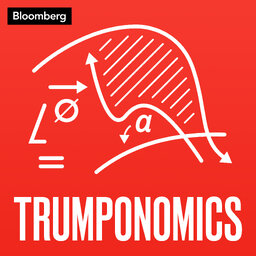Why Labor Unions Don't Have the Clout They Used To
A major puzzle in the U.S. economy is why wage gains have been relatively subdued in the last couple of years, even as all signs point to a tight job market where employers are having trouble filling positions. One reason is that labor unions just don't have the clout they used to in America. While there are occasional victories, the situation is a far cry from the glory days of the 1970s, and it's also helping reshape the political landscape. Jared Bernstein, former chief economist to Vice President Joe Biden and an expert on labor economics, joins Scott and guest co-host Patricia Laya to explain.
 Trumponomics
Trumponomics


